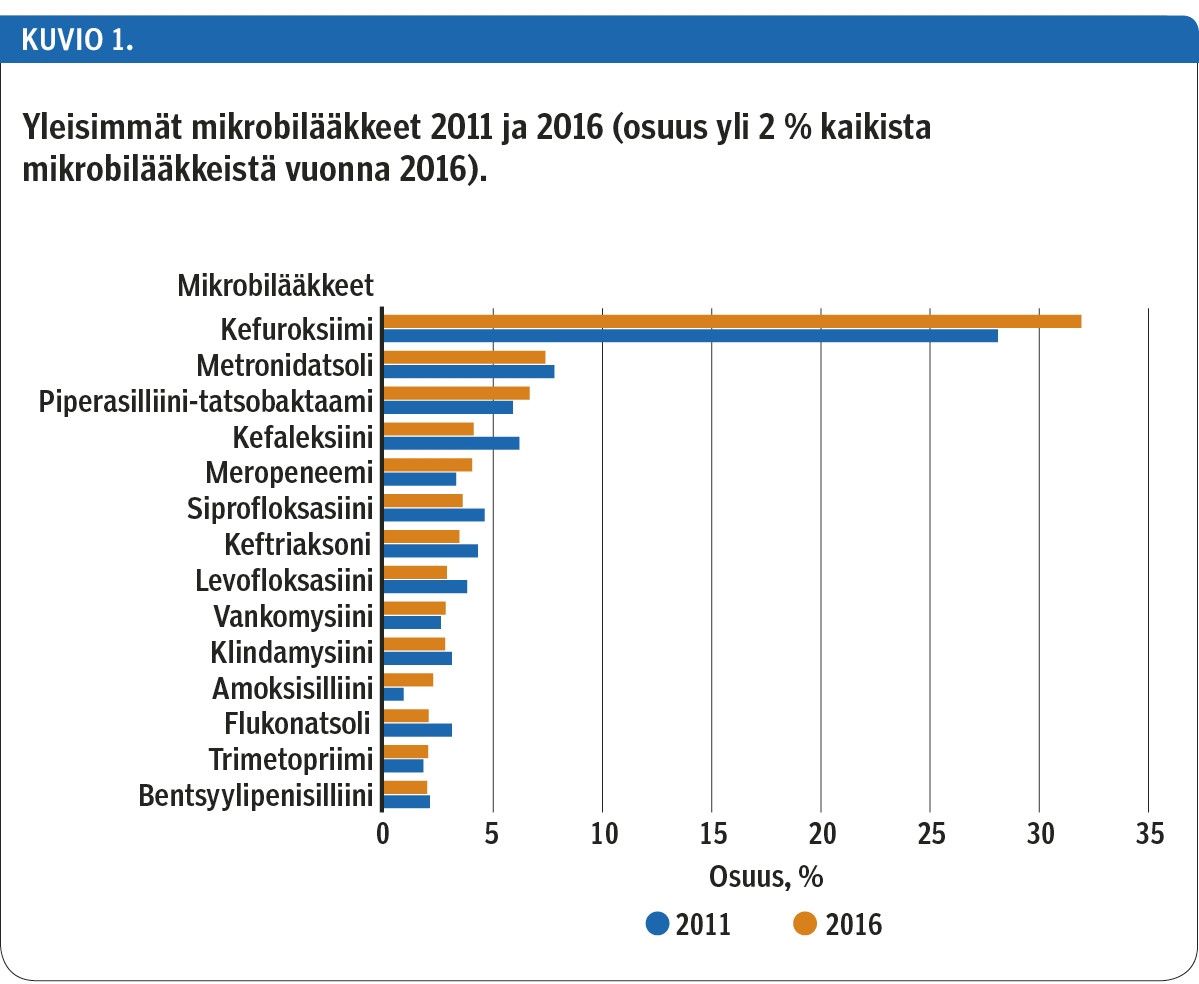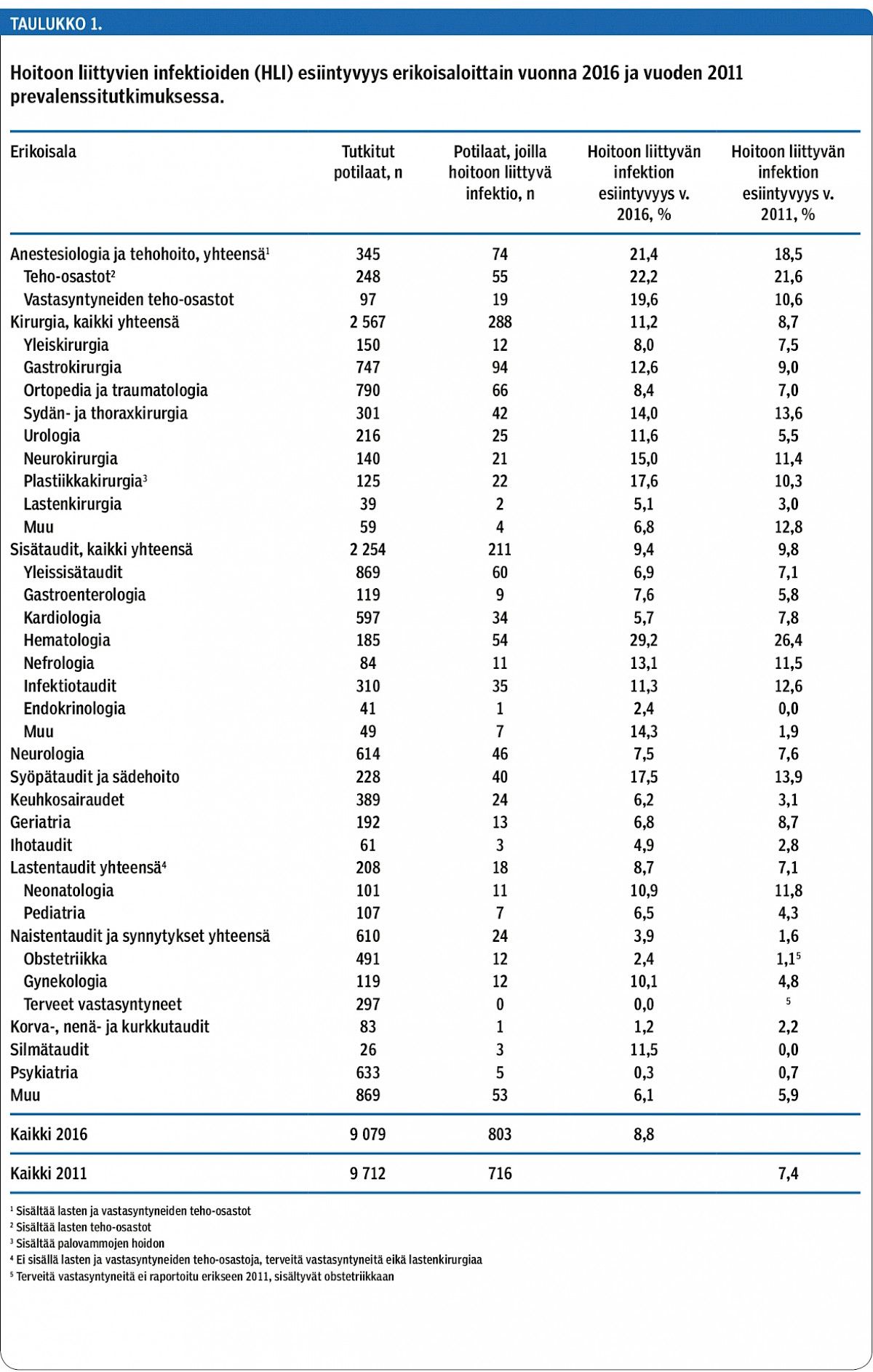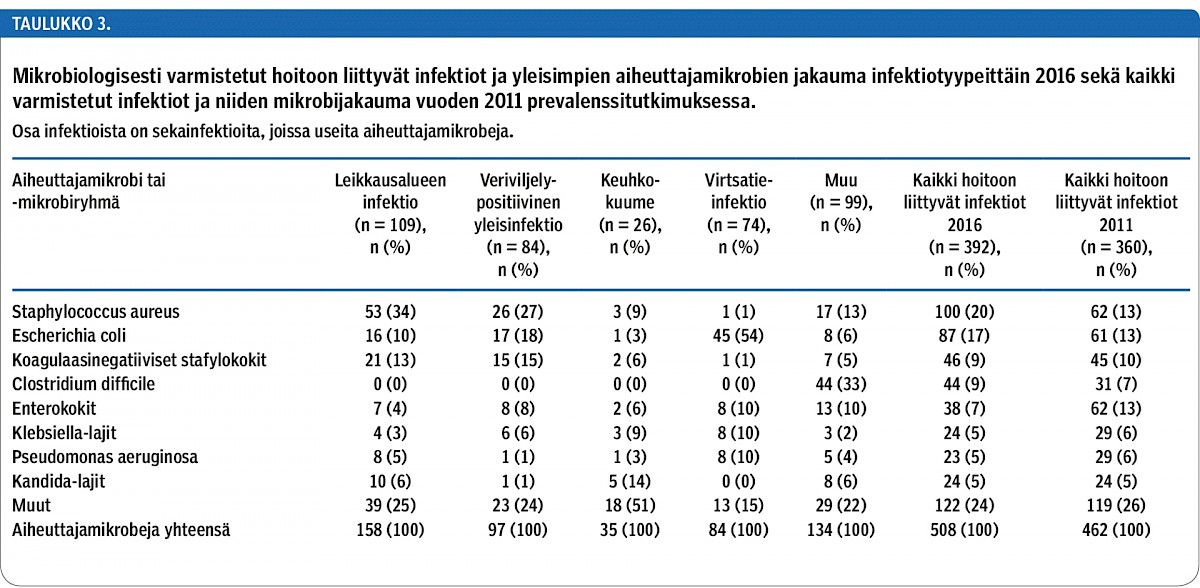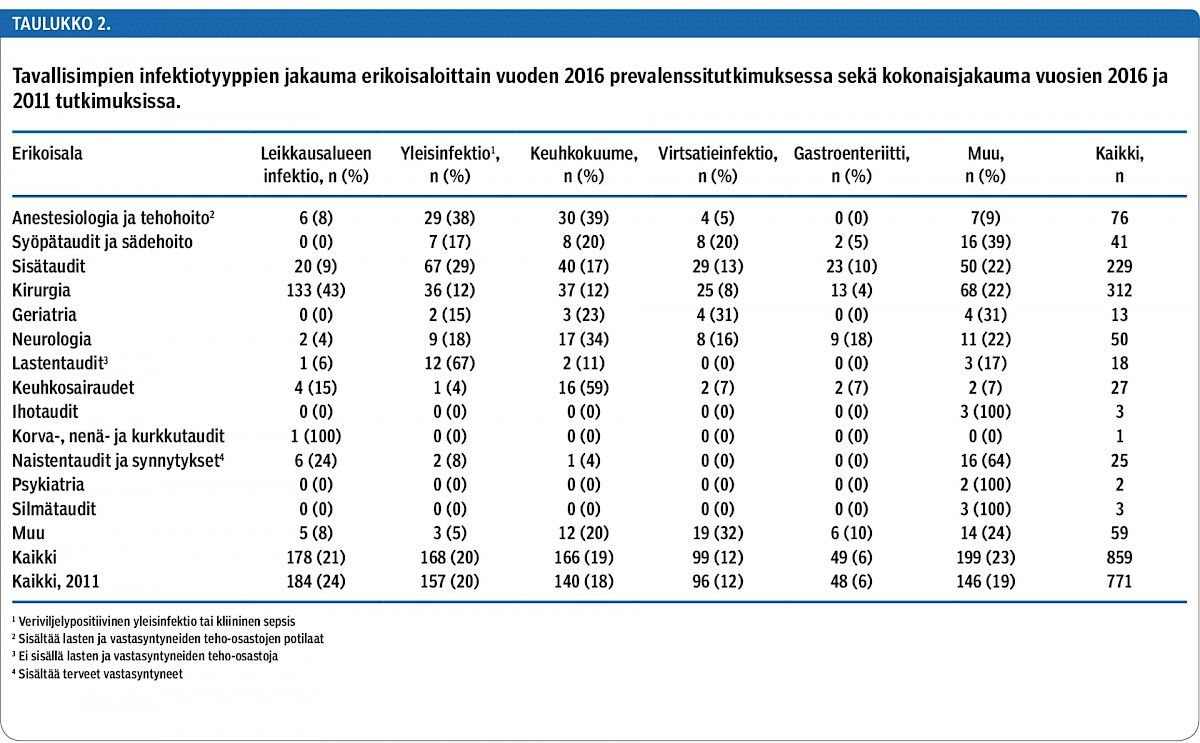Prevalence of healthcare-associated infections in Finland in 2016

BACKGROUND The European Centre for Disease Prevention and Control (ECDC) organized the second point-prevalence study in acute care hospitals in 2016–2017. The Institute for Health and Welfare (THL) was responsible for the study in Finland, together with the participating hospitals.
METHODS The study included patients on acute care wards. Data on healthcare-associated infections (HAIs) and antimicrobials were collected.
RESULTS The study included 9079 patients; 8.8% of them had at least one HAI, and 38% received antimicrobials. HAIs were most prevalent on intensive care units and among haematological patients. Surgical-site infection (21% of all HAIs), bloodstream infection (20%), and pneumonia (19%) were the most common types of HAI. Staphylococcus aureus (20%) and Escherichia coli (17%) were the most common causative organisms, and only few resistant strains were detected.
CONCLUSION HAI prevalence in Finland was somewhat higher than in the first European point-prevalence study in 2011. Prevalence of antimicrobial use was lower, but the proportion of broad-spectrum antimicrobials was greater than in 2011. The results of this study should be actively used to target future surveillance and control measures locally at the most common HAI types and/or patient groups at greatest risk, in order to effectively prevent HAIs.

















